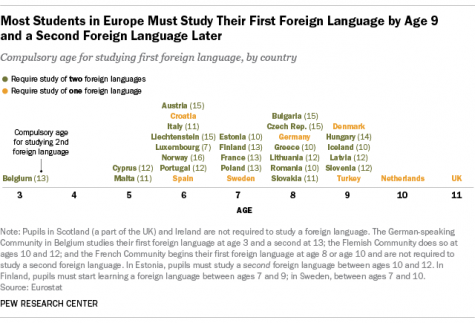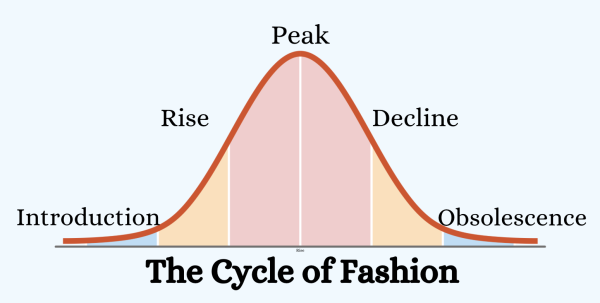Learning Languages at a Younger Age
There are over six thousand languages spoken worldwide.
March 30, 2017
¡Hola! Hello! Bonjour! Hallo! Languages are the basis of communication and knowing more than one language can greatly expand communication with others around the world. Not all people have the opportunity to be bilingual, but not for a reason that many think. Often times, people who are bilingual have come from different countries and learned the local language in addition to their native tongue. However, traveling and moving are not the only ways to learn a language.
For example, in much of Europe, it is mandatory for students to learn at least one foreign language, and many start at a very young age. Several countries actually make it mandatory for students to learn two foreign languages, the first starting around age 6, and the second in their teens. Aino Hakkinen (10) describes that when she lived in Finland, “You started to take English in second grade… then you can start learning a new language in fourth grade… Everyone takes Swedish starting in sixth grade and you can also take new languages starting in eighth or tenth grade. Most end up learning three foreign languages.” Not only does learning these new languages benefit communication, those who learn languages earlier are shown to be more creative, have better memories, have better critical thinking skills, and have a more flexible mind, just to name a few. On top of this, learning a new language earlier is beneficial to the actual learning process. Research has shown that younger students who start to learn a language can speak and understand it more than students who are older. Children’s minds absorb much more information when they are younger since their brains are still developing. This therefore allows them to retain the information and speak fluently and quickly without an accent. With so much focus on learning languages, it is no wonder that many of these countries are bilingual or trilingual.

The chart shows the number of languages that students must learn throughout Europe.
On the other hand, in the United States, learning a foreign language is more of an option than a requirement. Within the PYLUSD school district, students only have the option of taking a foreign language starting around seventh grade, yet many start even later. Coco Xu (10) believes that “Public schools should start teaching languages when students are younger. In fact, my brother who is currently in kindergarten [at a private school] has already started learning French and some Spanish.” If the public school system incorporated mandatory lessons for other languages at an early age, students would be able to boost their performance on standardized tests and in all other academic classes. Being bilingual also allows the expansion of knowledge of cultures around the world. As explained by Frontiers Academy, being bilingual allows “a deeper understanding of and appreciation for humanity and culture, which enriches one’s life and personal experiences in the world.”
Schools and colleges in the United States encourage being bilingual. However, if students are never provided with the opportunity to do so when they are younger, then it is difficult for them to learn the languages on their own. If a language is spoken at home, it may still be difficult for the child to learn if his/her parents do not teach it to their kids. So many times, people have said that they regret that their parents did not make them speak the language at home because they hardly remember it. If schools encouraged younger students to learn and use different languages, it would definitely be a huge improvement for the United States.
Source: pewresearch.org, frontiersacademy.org













































